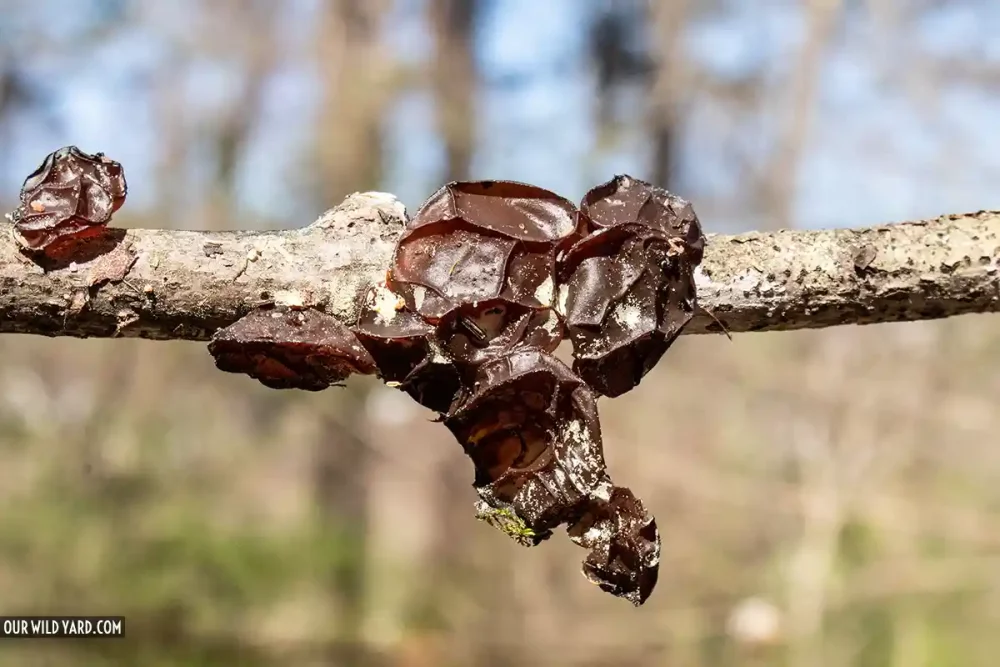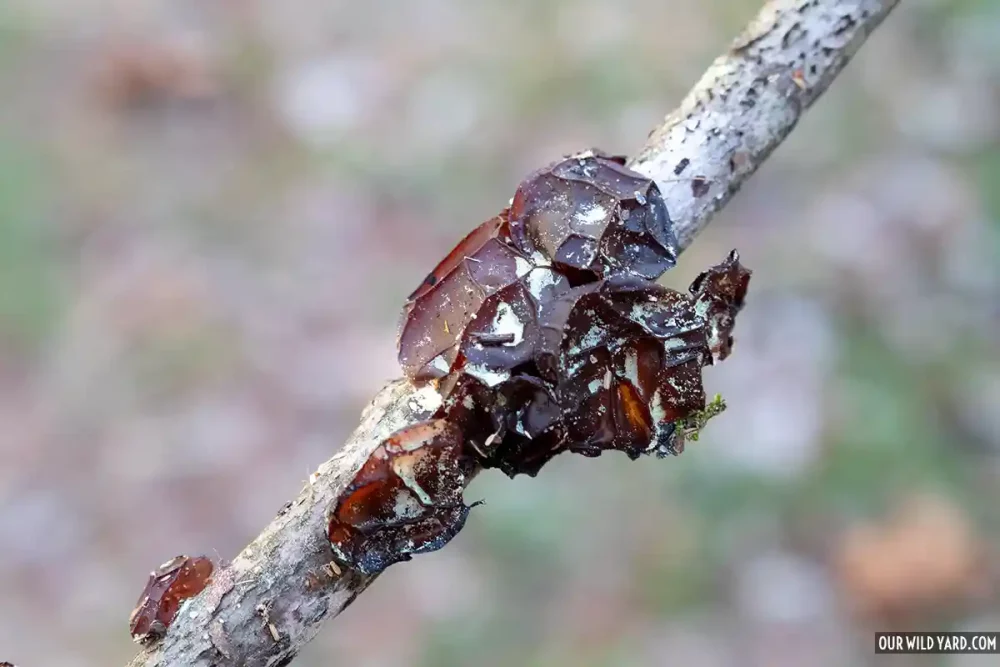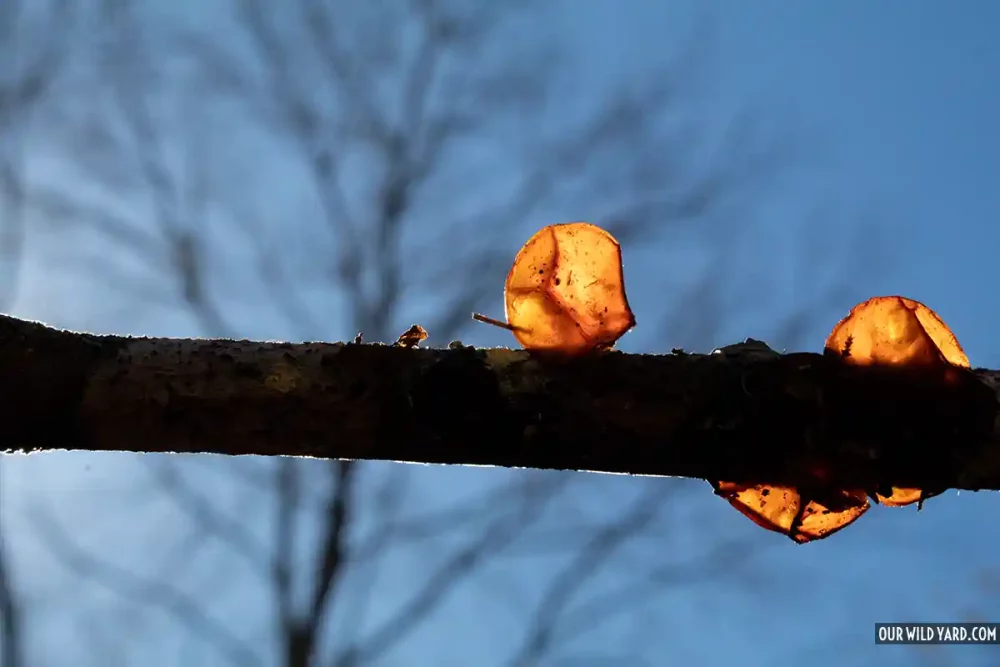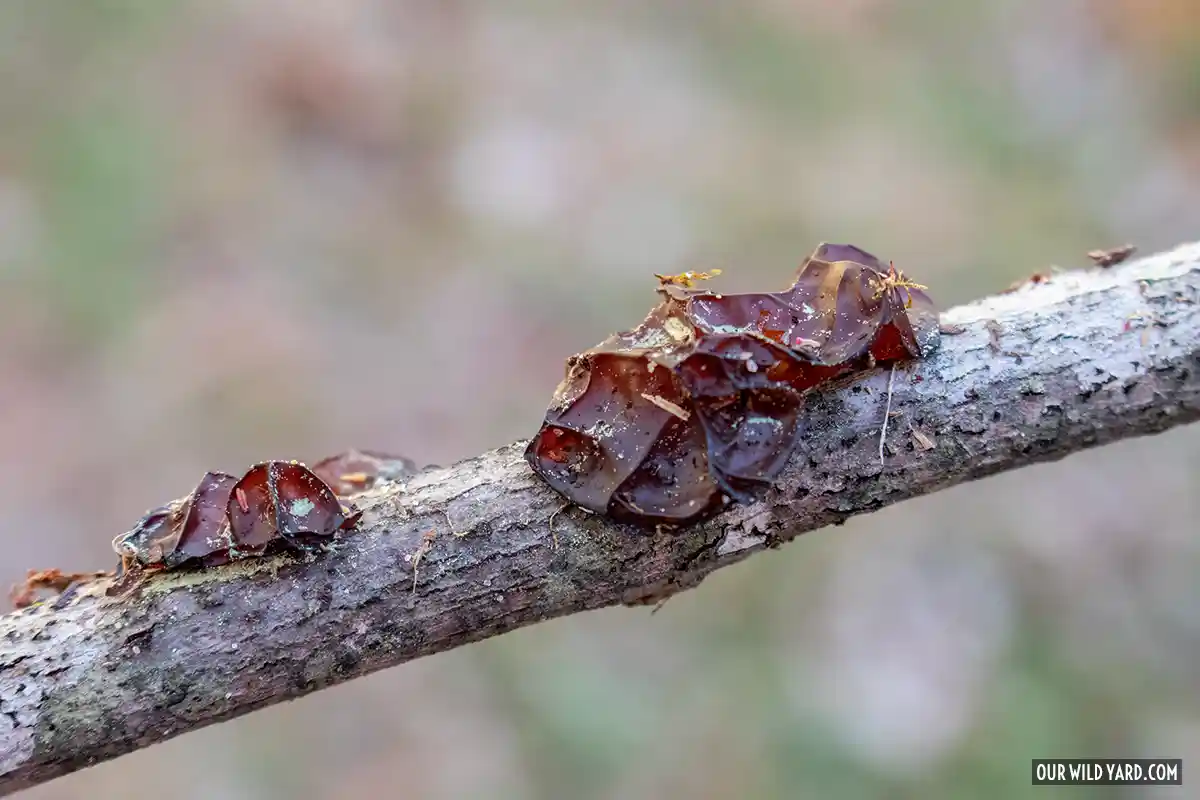
American amber jelly fungus (Exidia crenata) is a wood-rotting fungus that can be found year-round on hardwood branches and sticks after rains. It is common in North America and fairly easy to find. It is also known as amber jelly roll.
This jelly mushroom used to be called Exidia recisa, but it has been recently renamed. Exidia recisa is now used only for its European counterpart.
It is easily identified by its dark reddish color and the concave depressions all over the fruiting body.

This fungus has a stalk-like base and can be found forming irregular clusters
What is a jelly fungus?
Jelly fungi are a group of mushrooms that have a gelatinous and/or rubbery consistency. Other jelly fungi are black witches’ butter, American wood ear, orange jelly, and jelly tooth.
Most of the jelly fungi are sensitive to moisture, swelling after rains and shriveling during dry conditions, and most grow on wood.

Why is it called Amber jelly fungus?
I haven’t found the real reason why it was named Amber jelly fungus, but I’m guessing it is because when you hold it up against the sun, this jelly glows with a gorgeous amber color.

Are jelly fungi edible?
Jelly fungi are considered edible, although only the wood’s ear has become popular among foragers, and wild foods enthusiasts. All the other jelly fungi, like amber jelly, are known for being tasteless and bland, and A Field Guide to Mushrooms of the Carolinas states that all jelly fungus tastes like sautéed water.
*** When foraging and eating wild mushrooms always use ID guides and be completely sure you have positively identified them with the help of a qualified professional. Do not eat wild mushrooms that have not been identified. Do not use our article as an ID guide in case we or you have made an identification mistake.***
For more info on cooking with wild mushrooms see these books:

